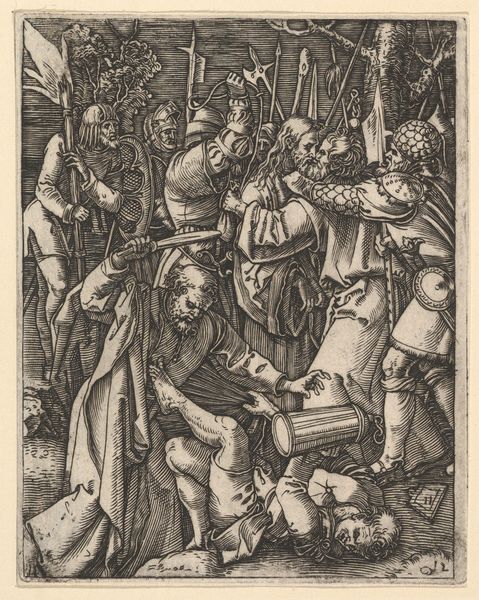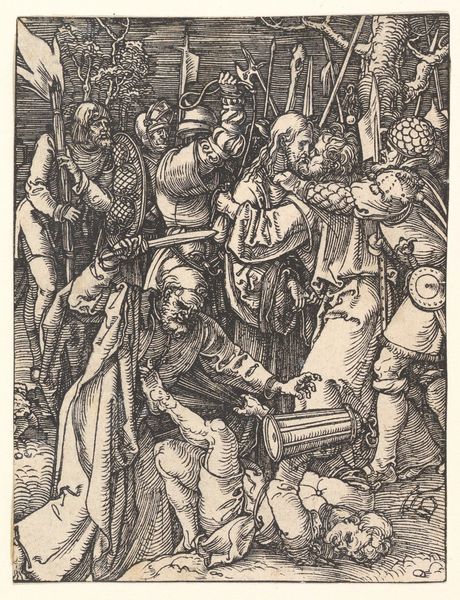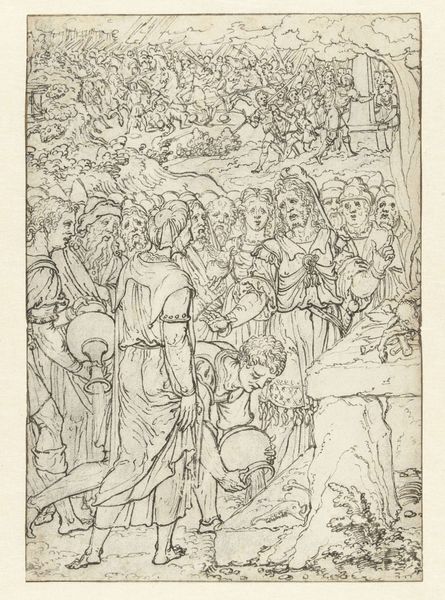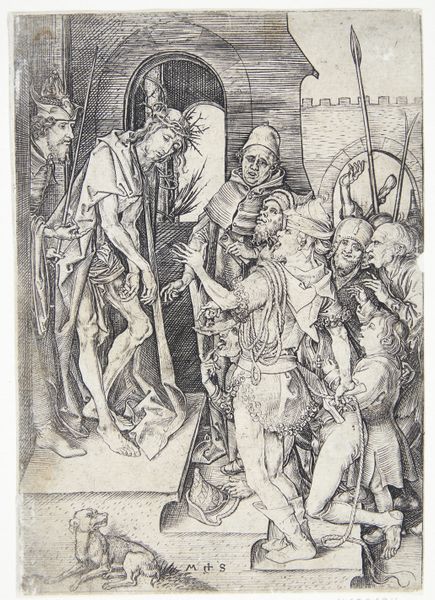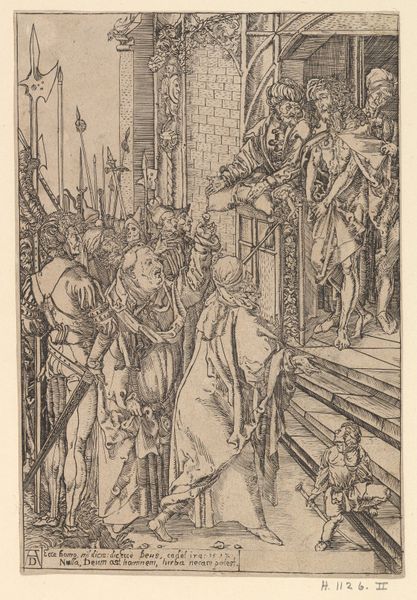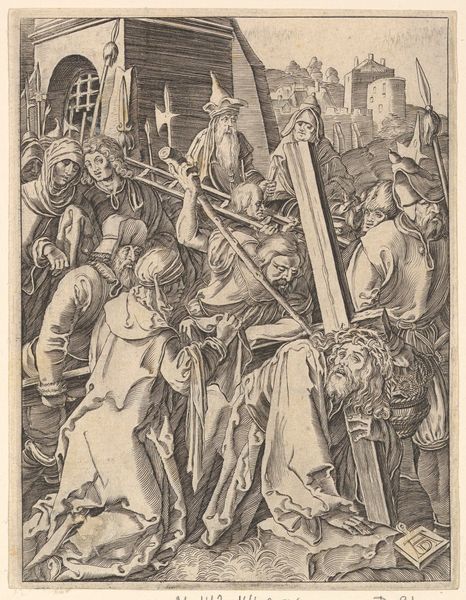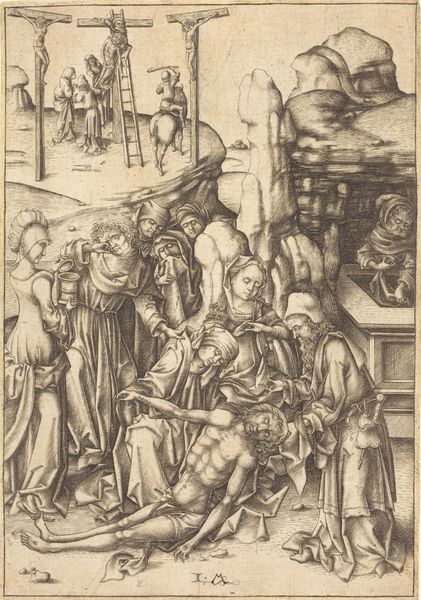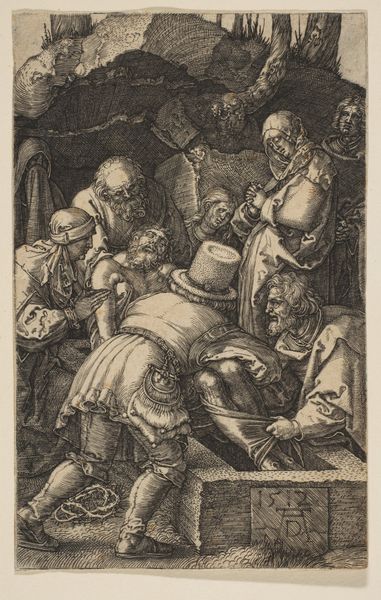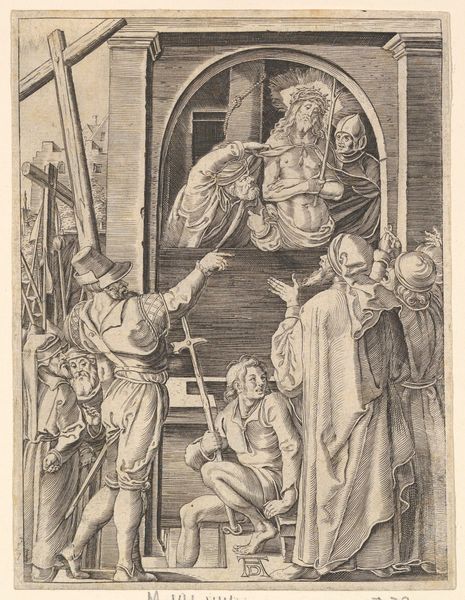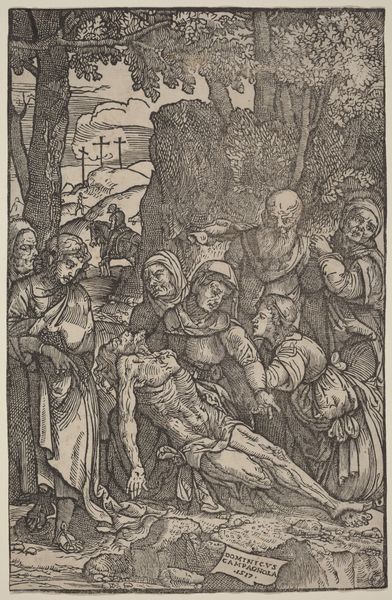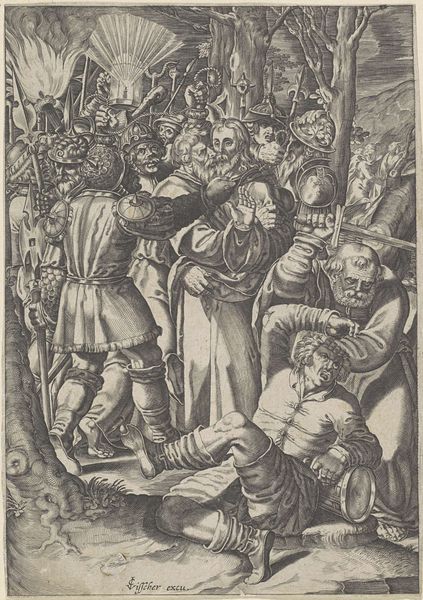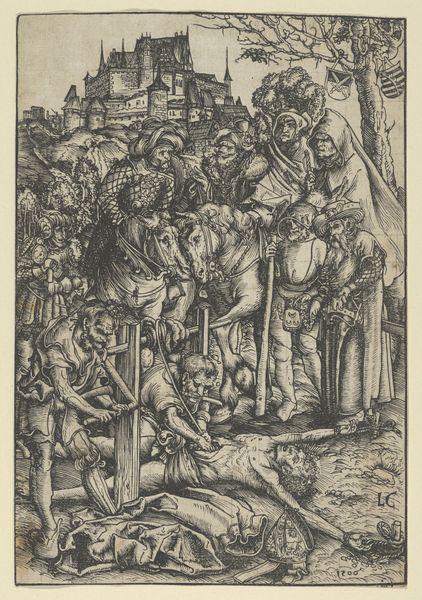
print, etching, woodcut
# print
#
etching
#
figuration
#
woodcut
#
history-painting
#
northern-renaissance
Dimensions: For the whole series: plate circa : 5 x 3 13/16 in. (12.7 x 9.7 cm)
Copyright: Public Domain
Curator: This woodcut before us is from a series titled "Engraved copies of The Little Passion," created between 1485 and 1699, attributed to Albrecht Dürer. Its current home is at the Metropolitan Museum of Art. Editor: The stark contrast of light and shadow really jumps out; there’s almost a chaotic energy in this composition. I immediately notice how tightly packed the figures are; it feels incredibly tense. Curator: Indeed. Note how Dürer masterfully uses line and tone to create depth and drama. The dynamism achieved through the engraving suggests movement and the raw emotions surrounding the Passion of Christ. The figures aren’t simply present; they are caught in a narrative moment. The formal elements of the work create more than just representation; it's about visual storytelling, about making visible this sacred story. Editor: Thinking about it from a material perspective, consider the laborious process involved. Each line had to be painstakingly carved into the woodblock. This intense labor mirrors the suffering depicted; the act of making becomes intrinsically linked to the subject matter. I am drawn to consider what tools were used and who made this object, and how this informs my perception of it as a cultural and physical object, reflecting production constraints in 16th century printmaking workshops. Curator: True. Dürer elevates what was essentially a reproducible image into a testament to artistry, drawing heavily on religious symbolism and using the human form as a canvas for both earthly and spiritual conflicts. The emotional tenor arises through these careful articulations. Editor: But beyond the artistic expression, these prints also democratized access to religious narratives. The mass-produced and widely accessible form broke the cultural monopoly and provided affordable access that empowered the public. The print's role transcends that of purely fine art. Curator: Looking at the intentional distribution of light, guiding our eye through different moments within the scene… This print serves as a complex symbolic construct reflecting deep theological concerns, an exploration of humanity’s capacity for faith and brutality. Editor: Considering the distribution channels and trading networks through which Dürer’s prints moved… These images acted as important cultural and economic artifacts; considering their circulation unveils fascinating dynamics related to belief, consumerism, and even the evolution of visual culture itself. Curator: I appreciate the level of social complexities we’ve brought forth today! Editor: I agree, analyzing art from its various elements, processes, and networks opens so many doors!
Comments
No comments
Be the first to comment and join the conversation on the ultimate creative platform.
